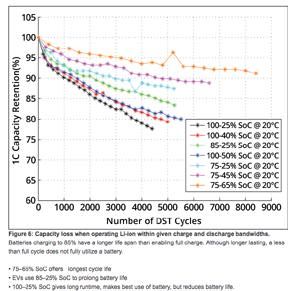Astros
Well-known member
I've now had my Leaf Plus for a year, so here are a few notes about my battery.
Mileage: 14,200
Ahr: 168.57
SOH: 95.56%
Hx: 113.29%
Charging: 36 L3 and 158 L2
We've experienced four adjustments of the reported Ahr, approximately every 90 days: 1.0, 1.3, 1.37, and 0.25 Ahr.
My wife is the primary driver and generally plugs in when the battery is down to about 50%, then charges to 100%.
So, we've lost about 4.5% capacity in the first year. If we kept losing capacity at that rate I wouldn't be very happy, but it does look like the rate of loss slows after ~7000 miles. If I spread out the losses from each of the big drops evenly over the preceding 90 days, the rate of loss was 6.2 Ahr per 10,000 miles at first, slowing to 3.7 Ahr per 10,000 miles. If it continues at that rate, I expect to have ~77% capacity remaining after 100,000 miles when the battery warranty runs out. There are a lot of unknowns, so that's of course just my best guess at this point.
Mileage: 14,200
Ahr: 168.57
SOH: 95.56%
Hx: 113.29%
Charging: 36 L3 and 158 L2
We've experienced four adjustments of the reported Ahr, approximately every 90 days: 1.0, 1.3, 1.37, and 0.25 Ahr.
My wife is the primary driver and generally plugs in when the battery is down to about 50%, then charges to 100%.
So, we've lost about 4.5% capacity in the first year. If we kept losing capacity at that rate I wouldn't be very happy, but it does look like the rate of loss slows after ~7000 miles. If I spread out the losses from each of the big drops evenly over the preceding 90 days, the rate of loss was 6.2 Ahr per 10,000 miles at first, slowing to 3.7 Ahr per 10,000 miles. If it continues at that rate, I expect to have ~77% capacity remaining after 100,000 miles when the battery warranty runs out. There are a lot of unknowns, so that's of course just my best guess at this point.

